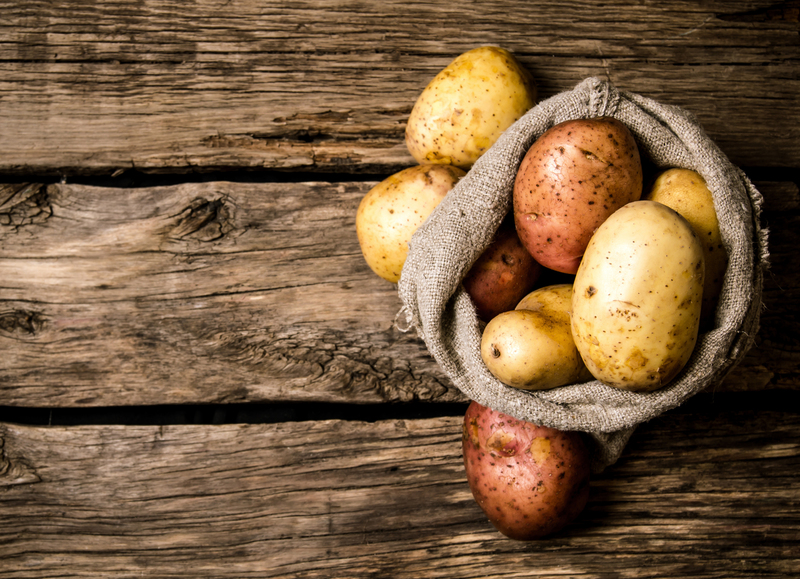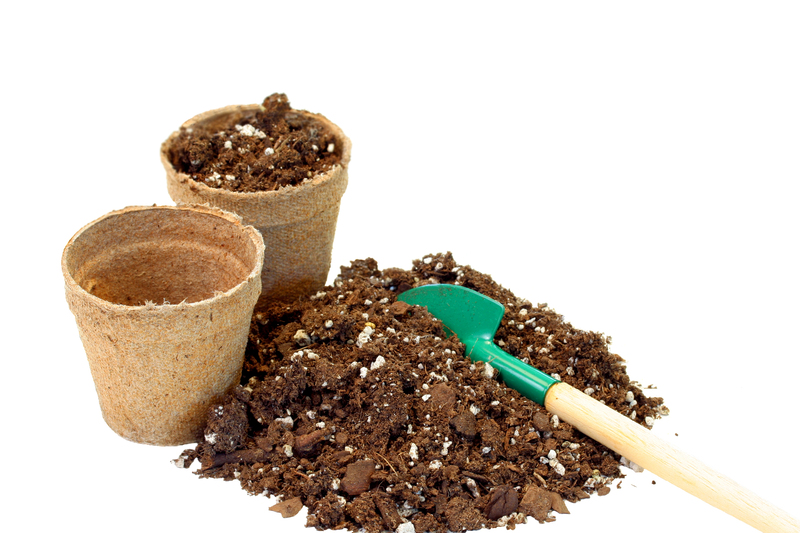Key Lawn Care Habits to Counteract Summer Drought Stress
Summer can be both a beautiful and challenging season for homeowners who take pride in their grass. The combination of increased temperatures and reduced rainfall often results in summer drought stress, leaving your lawn looking dull, brittle, or even dead. However, by adopting effective lawn care practices, you can not only mitigate the harsh effects of heat but also promote a healthier lawn throughout the summer months. In this comprehensive guide, we will explore essential habits and strategies to help you maintain a resilient lawn and counteract drought stress all season long.
Understanding the Impact of Drought Stress on Lawns
Drought stress occurs when your lawn receives less water than it needs for normal growth. This triggers a series of survival mechanisms in turfgrass, such as slowed growth, browning, and even temporary dormancy. If unaddressed, extensive drought can lead to root damage and increase susceptibility to disease and weeds.
- Discoloration: Turfgrass often turns straw-like, yellow, or brown under drought.
- Thin patches: Lack of water can lead to bare spots as grass stops growing or dies back.
- Compacted soil: Dry conditions can make soil harder, further restricting root growth and moisture uptake.
Understanding these signs is the first step in developing a lawn care routine that safeguards against the effects of summer drought stress.

Essential Lawn Care Habits for Drought Resilience
From watering wisely to strategic mowing, practicing specific habits will help your grass endure harsh summer climates. Below are the best lawn care methods to combat summer drought stress and encourage ongoing grass health.
Watering Techniques for Maximum Efficiency
Proper irrigation is the cornerstone of maintaining a healthy lawn throughout periods of drought. By optimizing your watering strategy, you can ensure grass roots receive sufficient moisture with minimal waste.
- Water deeply, but infrequently: It's better to water less often but more thoroughly. Aim for a depth that moistens the top six to eight inches of soil. This encourages grass roots to grow deeper, making them more drought-tolerant.
- Time your watering: The early morning hours (between 4 a.m. and 9 a.m.) are ideal for watering. This reduces water loss through evaporation and allows grass to dry before evening, decreasing the risk of disease.
- Avoid overwatering: Over-irrigation can lead to shallow roots and runoff--two problems that worsen drought stress. Only water when necessary, using a rain gauge or soil probe to monitor moisture levels.
- Invest in efficient irrigation systems: Drip or soaker hoses, smart timers, and rain sensors help maximize water use and adjust automatically based on weather conditions.
Developing consistent, strategic watering routines is essential for combating drought stress in lawns.
Mowing Practices for Hot, Dry Summers
When it comes to summer drought, how and when you mow your lawn can make a significant difference. The right mowing techniques will minimize stress, reduce water loss, and promote deeper root growth.
- Raise the mowing height: Set your mower blade higher (generally 3 to 4 inches). Taller grass shades the soil, reduces evaporation, and encourages robust roots.
- Mow less frequently: Allow your grass to grow longer before cutting. Mowing too often or cutting off more than one-third of the blade height at once can stress your lawn.
- Keep blades sharp: Dull mower blades tear rather than cut, leaving grass more vulnerable to disease and drought effects.
- Leave grass clippings: Mulching your clippings returns nutrients and moisture to the lawn, supporting healthier turf during drought.
Soil Improvement and Fertility: The Foundation for Success
Healthy, well-structured soil acts like a sponge, holding onto moisture for longer periods and supporting deeper root growth. Investing in the quality of your lawn's soil is a key lawn care tactic for drought resistance.
Test and Amend Soil Regularly
Begin with a soil test to determine pH levels and nutrient content. This helps identify deficiencies that could weaken your grass's ability to withstand drought.
- Add organic matter: Amending soil with compost, shredded leaves, or aged manure improves texture, boosts nutrient content, and enhances water retention.
- Use natural aeration: Aerating your lawn, either with a manual or mechanical aerator, helps relieve soil compaction and increases water penetration.
- Apply mulch: Mulching bare areas or around garden beds conserves soil moisture and helps regulate temperature.
- Maintain optimal pH: Grass grows best in slightly acidic to neutral soils (pH 6.0-7.0). Amend with lime or sulfur as needed to bring your soil into balance.
A strong soil foundation empowers your grass to thrive, even under tough summer drought conditions.
Nutrient Management During Drought
During drought, your lawn's ability to absorb nutrients can diminish. Improper or excessive fertilizing during hot, dry weather can exacerbate stress, scorch the lawn, or lead to leaching.
- Choose slow-release fertilizers: These provide nutrients gradually, minimizing the risk of burning your grass and encouraging sustained growth.
- Apply fertilizer sparingly: Avoid heavy fertilizing in the peak of summer. A light application in late spring or early fall is safer and more effective for most lawns.
- Look for low-nitrogen blends: High-nitrogen fertilizers promote rapid top growth, which requires more water. Low-nitrogen options support balanced, drought-tolerant growth.
Avoid the temptation to over-fertilize in dry periods. Sometimes, less is more for supporting drought-stressed lawns!
Pest and Weed Management in Drought Conditions
Summer drought weakens your lawn, making it more vulnerable to pest infestations and weed incursions. A proactive approach to integrated pest management can reduce competition for limited resources and protect your grass.
Monitor and Control Weeds
- Hand-pull weeds: Remove weeds manually whenever possible--they compete with your grass for water and nutrients.
- Spot treat with herbicides: Apply targeted herbicides for persistent weeds, but use sparingly to avoid additional stress on your lawn.
- Maintain a dense turf: A thick, healthy lawn naturally shades out many weed species, reducing their ability to take hold.
Watch for Pests and Disease
- Scout regularly: Check for lawn grubs, chinch bugs, and fungal diseases. Early detection allows for less aggressive, eco-friendly control measures.
- Use biological controls: Nematodes and predator insects can help control pests without harming your lawn's ecosystem.
*Prioritizing natural pest and weed control methods helps preserve overall lawn health through stressful summer months.*
The Importance of Proper Lawn Selection and Overseeding
Choosing the right type of grass is a critical factor in reducing drought stress on lawns. Some grass species are inherently more drought-tolerant than others. If your lawn struggles every summer, it may be time to overseed with hardier varieties.
- Select drought-resistant species: Fescues, buffalo grass, Bermuda grass, and zoysia are known for their drought tolerance and ability to thrive in hot climates.
- Overseed in fall or spring: Adding new, tougher varieties helps gradually transition your lawn to better withstand summer dryness.
*Consult local turf professionals or your county extension office to find the best grass type for your region and soil.*
Additional Habits to Counteract Summer Drought Stress
There are a few more lawn care practices that can make a significant difference in preparing your yard for summer--and in helping it recover from stress.
- Mulch garden beds: Applying mulch to beds and bare spots conserves soil moisture, suppresses weed growth, and provides a neat, finished appearance.
- Avoid heavy foot traffic: Try to keep pets and children off of drought-stressed lawns. Compacted soil exacerbates water loss and impedes root recovery.
- Use grass cycling: Instead of bagging clippings, leave them on the lawn to decompose, returning moisture and nutrients back to the grass.
- Respond to heat waves: During extreme heat, consider suspending all but essential lawn care (such as light watering). Grass may go dormant but should recover with the return of rain and moderate temperatures.
The Role of Smart Technology in Drought Lawn Care
In the age of smart homes, integrating modern technology into your lawn care routine can help you optimize water use and monitor lawn health more effectively.
Smart Sprinkler Systems and Soil Moisture Sensors
- Automated scheduling: Smart controllers allow you to set watering schedules that mimic natural rainfall and avoid unnecessary irrigation.
- Soil monitoring: Sensors can be installed to measure soil moisture in real time, ensuring you only water when your lawn truly needs it.
- Weather adaptation: Many smart systems connect to local weather forecasts, skipping watering during rain or adjusting for heat waves.

Frequently Asked Questions on Drought Lawn Care
Can my lawn recover after severe drought stress?
Yes, most grass species can recover from short-term dormancy if roots remain viable. With consistent watering and proper care, new growth should appear within a few weeks of improved moisture conditions.
Should I fertilize my lawn during a drought?
It is best to avoid fertilizing during periods of severe heat and drought, as this can further stress the grass. Wait for milder conditions and adequate rainfall before resuming nutrient applications.
What's the best way to check if my lawn needs water?
Simply press a screwdriver or soil probe into the ground. If it goes in easily, your soil has enough moisture. If it's difficult to penetrate, it's time to water.
Should I mow a brown or dormant lawn?
Limit mowing when grass is dormant. Only mow to remove excessive length, and never cut more than one-third of the blade at a time.
Conclusion: Building Summer Drought Resilience in Your Lawn
Drought and extreme heat may seem inevitable every summer, but your lawn doesn't have to suffer. With thoughtful preparation, intelligent watering, and a robust routine of care, you can create a lush, green turf that withstands even the toughest summer conditions. Start by prioritizing soil health, adjusting mowing and watering habits, and choosing drought-resistant grass whenever possible. Integrated pest and weed management, combined with the latest technology, can further tip the scales in your favor.
It takes dedication and a bit of extra effort, but with these key lawn care habits to counteract summer drought stress, you can enjoy a vibrant, resilient yard all season long--no matter what the weather brings.
```